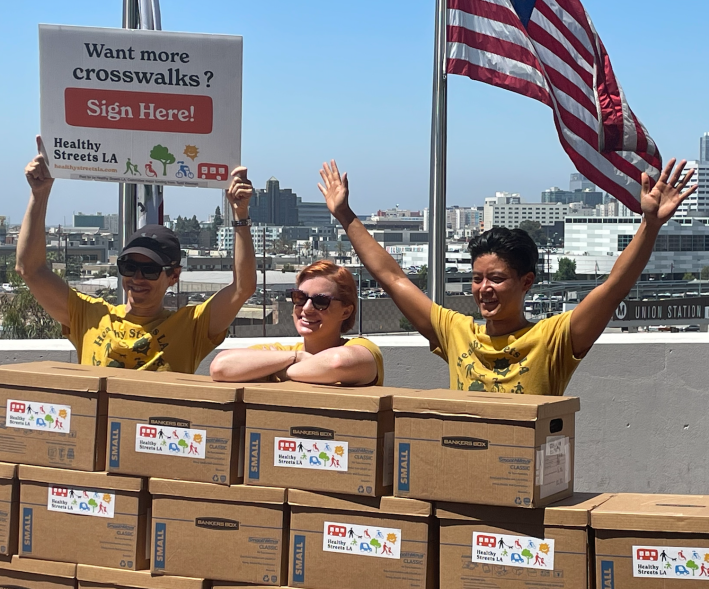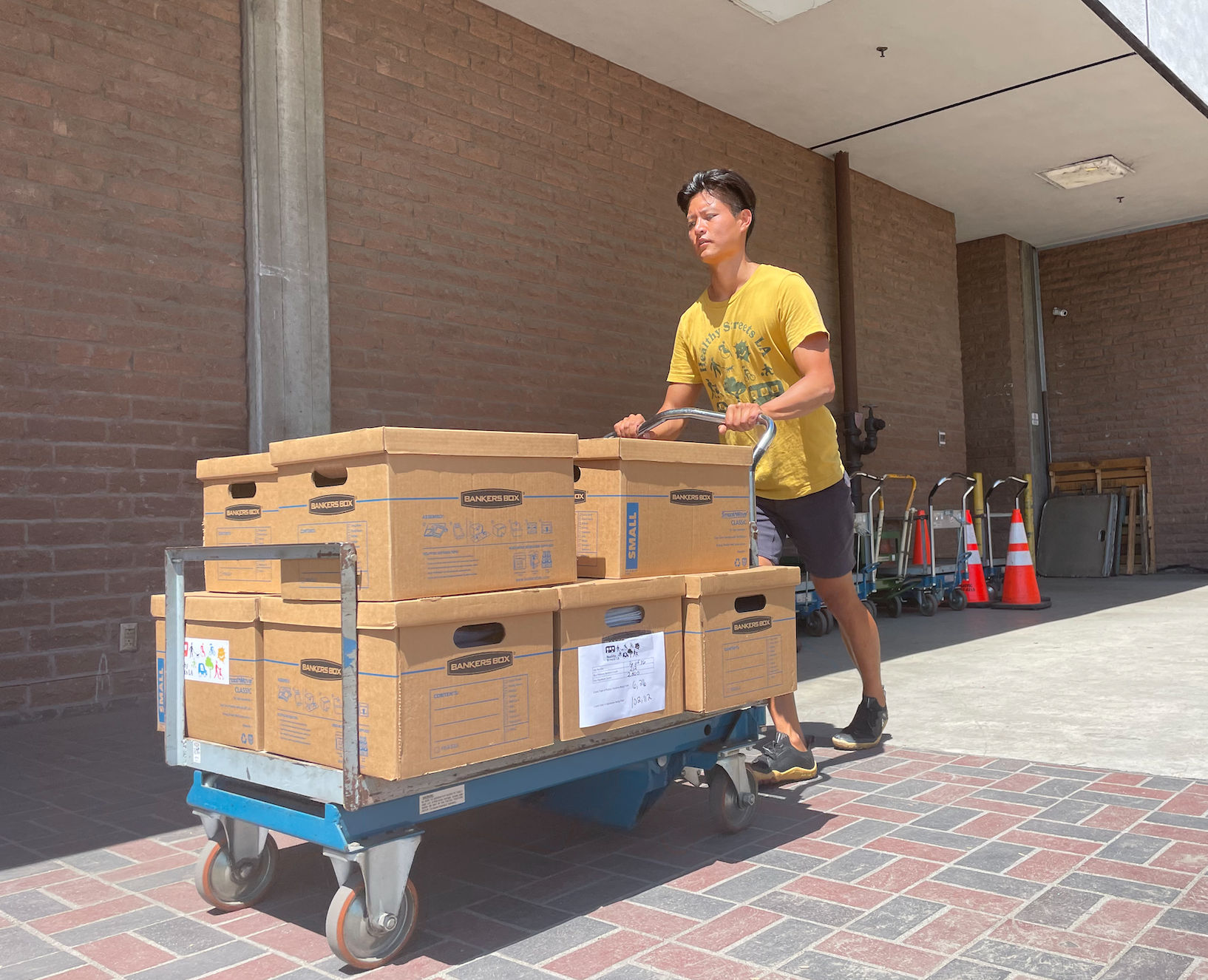In 2015, the City of Los Angeles passed a progressive mobility plan that promised to increase safety and access for bicyclists and pedestrians, reduce emissions, increase access to transit and eliminate car-dependency. Like many initiatives passed during the Garcetti administration, the Mobility Plan lingered. Since the passage, Los Angeles has only implemented 95 miles of improvements out of 3,137 miles planned...less than 3%.
But in the past 24 hours, two things have happened that may finally force the city to live up to its ideals and promises to clean up and modernize its transportation infrastructure.
Earlier today, advocates with Streets for All submitted over 102,000 signatures to place a measure for voters on a future ballot that would require that when Los Angeles completes a road resurfacing or slurry project, that it re-stripes the street to conform to the mobility plan. The measure would need a majority of votes to pass. The Healthy Streets L.A. Ballot Initiative has been supported by a large coalition of advocacy groups including Move L.A., Pacoima Beautiful, and the Sunrise Movement. It is also endorsed by Streetsblog L.A.

Yesterday, the City Council unanimously passed a motion directing the City Attorney to draft an ordinance that they could pass to accomplish the same thing (advocates for fast moving traffic, Gil Cedillo and Paul Koretz, were not present.) The City Council hopes to vote on the city ordinance sometime in August and it needs only eight votes to pass...four less than it received yesterday.
However, now that the Healthy Streets L.A. Initiative has submitted its signatures, once those signatures are verified the City Council can, also with a majority vote, enshrine Healthy Streets L.A. into law. If the Council doesn't take this action, it would then head to the ballot regardless of whether or not the Council passes its own initiative. If Healthy Streets is passed either by voters or the Council, it would take an act of the voters in a future election to undo it.
According to Michael Schneider, the Founder of Streets for All, the best scenario would be if the Council passed Healthy Streets L.A. in addition to their own ordinance that would then outline how the City implements Healthy Streets LA.
"There are things in the ordinance, good things, that aren't in the initiative," explained Schneider after delivering the signatures earlier today. His advice to the Council? "Adopt ours, and then adopt yours as the implementation mechanism."
In addition to requiring the city to implement the mobility plan after fixes, the future Council ordinance will also: create a coordination office at Public Works to marshal city departments to implement the ordinance, task the City Administrator to develop a plan and budget to make sure the plan is implemented in areas that need it most, and sets aside funding to build a public dashboard so that the public can see what projects will be implemented.
The concurrent timelines for the Healthy Streets L.A. Ballot Initiative and City Council ordinance can be a little confusing, so here's a rough timeline of how things should proceed in the next couple of months. As you can see, exact dates are hard to pin down:
- Yesterday, June 29 - The City Council passes the motion asking for an ordinance that would require that the mobility plan be implemented as the city repaved and 'slurried' streets.
- Today, June 30 - Streets for All submitted 102,000 signatures to the city for the Healthy Streets L.A. Ballot Initiative.
- "Within two weeks" - The City will count and confirm the total number of signatures submitted by Healthy Streets L.A.
- Fifteen days after that - The city will verify that the signatures are of registered voters in the City of Los Angeles and were properly collected.
- Within twenty days after that - Assuming Healthy Streets L.A. has enough signatures, the City Council can vote to adopt the measure as law with a vote of the majority of the members. If they do not adopt the measure, it heads to the ballot.
- Sometime in August - The City Council will receive its ordinance from the city administrator that was requested yesterday. It can pass all of it, part of it, or none of it regardless of how they voted on Healthy Streets L.A. If they adopted Healthy Streets L.A., they cannot water it down or change it with this ordinance. Whatever is passed needs the signature of the mayor and becomes law in 30 days after the signing.
Disclosure: Damien Newton collected signatures from friends and family to support this measure.







